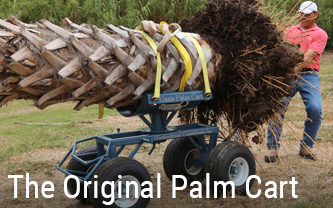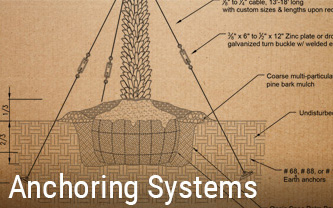At times, landscapers may find it necessary to thin vegetation. Perhaps the plant is not thriving as it should and a new location may be deemed advantageous. Nurseries and harvesters, by definition, must constantly transplant trees from their original stand to the customer’s premises.
While the plant’s compact root ball makes palms a great candidate for transplant, it is also imperative that handlers unearth the plant carefully. Generous wetting around the base of the plant, for example, ensures that as much soil sticks to the root ball as possible, which in turn facilitates the plant’s acclimation at the new location. Burlap may also be required to keep the specimen moist during transport.
A palm cart is recommended for hauling the tree to the transport vehicle to ensure the most effective and safest handling possible, with minimum trauma to the plant. Avoiding stress is important to decrease the weakened plant’s susceptibility to pest infestation. Braces and splints are often needed to ensure top-heavy species do not snap from the weight of the crown, and extra care must be taken to protect the plant’s heart and bud at all times. The plant’s leaves (and possibly stem clusters) should be tied together to avoid injury.
At the destination, handlers must transplant the specimen at the same depth at which it grew initially in an effort to maximize the chance for the plant’s survival. The root initiation zone’s extreme sensitivity can lead to the death of the plant if it is buried too deeply.
The complexity of moving palm trees often calls for the help of industry experts who are experienced in handling these tropical plants.




